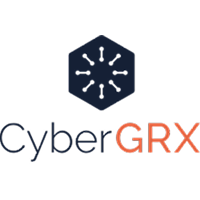Your Next
Technical Cofounder
15+ years of experience helping companies build better tech organizations, launch new products, and grow with confidence.

How I Accelerate Success
Ship Fast, Learn Fast
Focus on delivering the first quantum of value quickly, then iterate based on real user feedback.
- MVP in days, not months
- Data-driven iterations
- Continuous user feedback loops
Supercharge Your Teams
Deliver faster with proven tools and practices that scale across your organization.
- Best-in-class development workflows
- Automated testing and deployment
- Cost-effective scaling solutions
Find Product Market Fit
Transform engineering teams into product teams that own the full lifecycle from idea to customer value.
- Data-driven feature development
- Customer usage insights
- Value-driven prioritization
Companies I've Helped Grow
I've had the privilege of working with innovative companies to help scale their technology and teams.

Protectwise
Acquired by Verizon
"Jake was instrumental in building our cloud-native security platform. His technical leadership helped shape our architecture and team practices."

Food Service Warehouse
"We were deploying c# on vSphere when Jake joined on our first Nodejs backend team. He had been using Docker, we identified Kubernetes as our next step, and Jake hit the ground running. Our node services had the fastest release cycle in the company."

Cloaked
"Jake is a force for good unlike any other. He migrated our infra to a cheaper and more scalable system, crafted a CI pipeline that accelerated deploys by 30x, and taught the whole company how to make data-driven decisions by building and showcasing an entire product analytics stack. And that was just his first 6 months."

CyberGRX
Now ProcessUnity
"I watched Jake redo a build and deploy process over the span of 3 days, whip up a presentation, and get every engineer in the org up to speed using it to deploy new services, a moment I'll never forget because our productivity EXPLODED afterwards."

Inception Health
"I also wanted to second (third? Fourth?) Jake's skills here. I don't have anything unique to add as everyone else has already covered it, but this man will help you achieve what you need."

Magic
"Jake worked in the pit with [the operations team] and everyday came in with killer energy. Everyone else told us how to work around problems. Jake built us better tools."
How I Actually Build Products
Forget lengthy roadmaps. Real products are built one small experiment at a time, with real users, not focus groups.
The Reality of Building Something People Want
Start Embarrassingly Small
What's the tiniest thing that could possibly be useful? Build that. Not next week. Today.
Example: Don't build a full analytics dashboard. Start with one number that actually matters to your users.
Get It In Front of Real Humans
Not your team. Not your mom. Real users who will actually tell you it sucks.
Pro tip: If you're not slightly embarrassed by v1, you waited too long to ship.
Instrument Everything
Before you ship that tiny feature, add analytics. Know exactly how people use it (or don't).
Must have: Usage tracking, error monitoring, and performance metrics from day one.
Let Data Drive the Next Step
What users do matters more than what they say. Follow the usage patterns, not the feature requests.
Reality check: 80% of features never get used. Build the 20% that matters.
Infrastructure That Enables Speed
You can only iterate quickly when the basics are rock solid:
- CI/CD from day one - Deploy in minutes, not hours
- Feature flags everywhere - Test with 1% before rolling to 100%
- Real-time monitoring - Know immediately when something breaks
- Automated rollbacks - Undo mistakes in seconds
Metrics That Actually Matter
Skip the vanity metrics. Focus on what drives decisions:
- Time to value - How fast do users see benefit?
- Feature adoption - Are people actually using what we built?
- User paths - Where do they get stuck?
- Error rates - What's breaking their experience?
"The best product teams don't guess. They ship small, measure everything, and let users show them what to build next."
- My approach after 15+ years of building products
Eliminate Toil, Ship Value
Every manual step is a chance to mess up. Every missing automation is time stolen from building what matters.
The Hidden Cost of Manual Work
What Manual Processes Really Cost
- 30 minutes to manually run tests before each deploy
- 2 hours debugging because someone forgot a step
- 1 day rolling back a bad deploy without automation
- Weekends spent applying security patches
What Automation Gives Back
- 0 minutes - Tests run automatically on every push
- Consistency - Same process every time, no forgotten steps
- 60 seconds to rollback with automated deployments
- Sleep well - Patches apply automatically, safely
Automate Everything That Steals Focus
Code Quality
- • Auto-format on save
- • Linting in your editor
- • Type checking in CI
- • Code review automation
Testing & Validation
- • Tests run on every PR
- • Coverage reports
- • Performance benchmarks
- • Security scanning
Deployment & Operations
- • Merge on green builds
- • Deploy on merge
- • Rollback on errors
- • Auto-scale on load
The Compound Effect of Automation
"If you do it twice, automate it. If it can fail, monitor it. If it takes focus away from creating value, eliminate it."
This is how you build software that matters.
Align Teams Around What Actually Matters
The bar for "good enough" starts low and rises with product-market fit. Teams that measure the right things and hold themselves accountable will find it.
The Path to Product-Market Fit
Start: Define Success Metrics Before You Build
Every feature needs a number. Not a feeling, not a hope - a measurable outcome.
Example: "This feature succeeds if 20% of users who see it click through in week one."
Measure: Track What Users Actually Do
Feature usage tells you what's worth your time. User journeys show you where they struggle.
- Usage metrics: Which features get used daily vs forgotten
- Journey mapping: Where users come from and where they give up
- Performance data: Because slow = abandoned
Experiment: Test Small Before Going Big
A/B tests prove causation. Feature flags control risk. Data beats opinions.
Reality: That "obvious improvement" might make things worse. Test with 5% of users first.
Focus: Relentlessly Prioritize Your Critical Metrics
Pick 2-3 metrics that define your business. Everything else is a distraction.
The test: If this metric goes up, will customers pay more or stay longer?
Team Alignment Checklist
- Everyone knows this sprint's key metric
- Features ship with dashboards, not just code
- Retrospectives review data, not feelings
- Failed experiments are celebrated as learning
Metrics That Move Business
- Revenue per user: The ultimate scorecard
- Time to value: How fast users see benefit
- Retention rate: Do they come back?
- Feature adoption: What actually gets used
"Build what users need, not what they ask for. Measure what they do, not what they say. Ship when the data says go, not when it feels done."
The difference between teams that hope and teams that know.
The Stack That Ships
Boring technology choices that let you focus on what makes your product unique. Everything automated, everything measured.
Infrastructure That Scales
- AWS/GCP: Start cheap, scale infinite
- Kubernetes: Deploy anywhere, same way
- Terraform: Infrastructure as code, always
- Cloudflare: Fast everywhere, automatically
Ship Every Commit
- GitHub Actions: Test on every push
- ArgoCD: GitOps that actually works
- Feature Flags: Test with 1% first
- Rollbacks: Undo in 60 seconds
Know Everything
- PostHog/Mixpanel: User behavior tracked
- Datadog/Grafana: System health visible
- Sentry: Errors caught instantly
- OpenTelemetry: Trace every request
The AI Engineering Toolkit
Building with AI
- OpenAI/Anthropic APIs: Ship AI features today
- Vector DBs (Pinecone/Weaviate): RAG that scales
- LangChain/LlamaIndex: Complex AI workflows
- Guardrails: AI that behaves predictably
Measuring AI Impact
- Token usage tracking: Know your costs
- Latency monitoring: Keep it snappy
- Quality metrics: Measure what works
- User feedback loops: Improve constantly
"The best stack is the one that gets out of your way. Automate the boring stuff so you can focus on what makes your product special."
Pick boring technology. Ship interesting products.
Are We a Good Fit?
I thrive where rapid iteration meets real user feedback. Let's see if your challenges match my strengths.
Perfect Matches
-
AI Product Engineering
Building products that leverage LLMs, RAG systems, and AI APIs - not training models
-
Zero-to-One Products
Starting with tiny MVPs, instrumenting everything, iterating based on real usage
-
Platform & Infrastructure
AWS, Kubernetes, Terraform - automating away all the toil
-
Metrics-Driven Development
Teams that want to measure, experiment, and know - not guess
-
Developer Productivity
Eliminating friction so teams ship 10x faster with confidence
-
Technical Leadership
Building teams that own outcomes, not just outputs
Not My Strengths
-
UI/UX Design
I make things work great, not look great. You need a designer for that.
-
Machine Learning Research
I integrate AI, not invent it. Model training isn't my thing.
-
Legacy System Maintenance
I modernize and migrate, not maintain what's already old
-
Hardware & Embedded Systems
If it doesn't run in the cloud, it's not my domain
-
Waterfall Projects
6-month roadmaps? I ship in days and iterate
The Sweet Spot
You'll get the most value from me if you're...
Moving Fast
Ready to ship small and iterate based on data
Data-Driven
Willing to measure everything and act on it
Automation-First
Eager to eliminate toil and focus on value